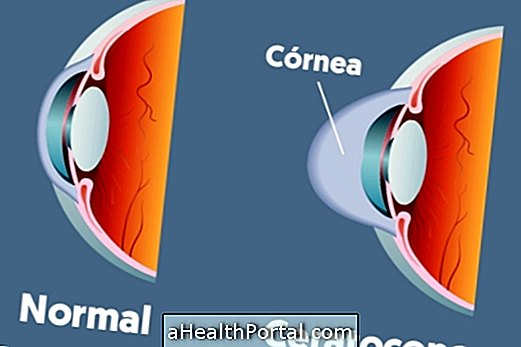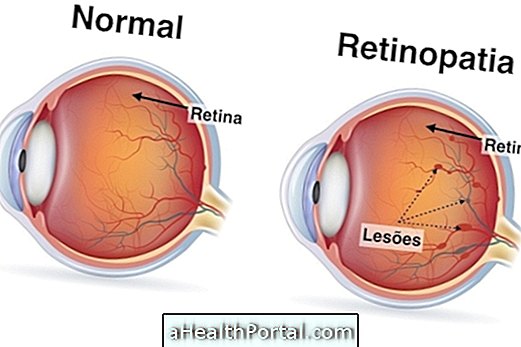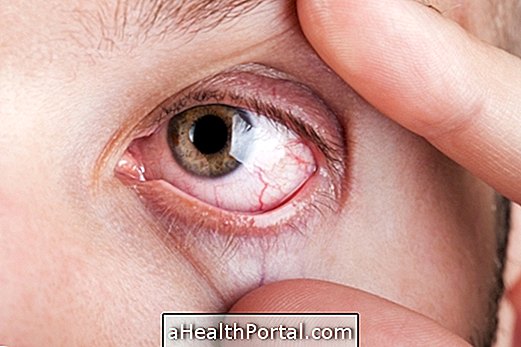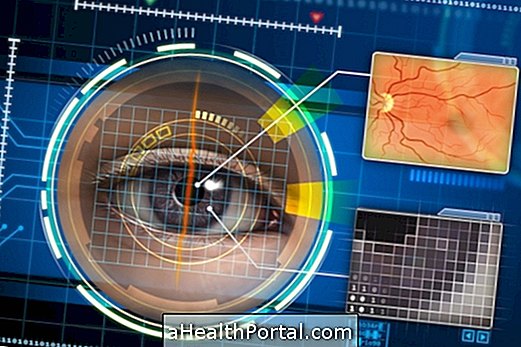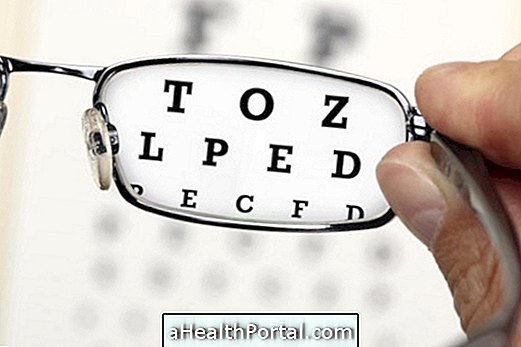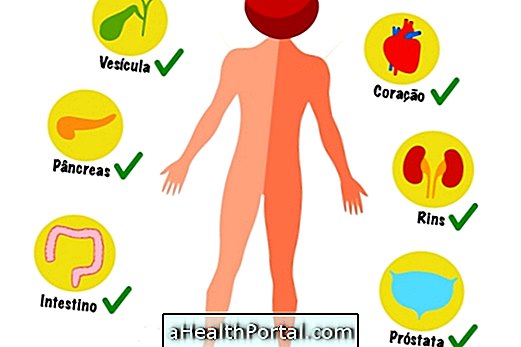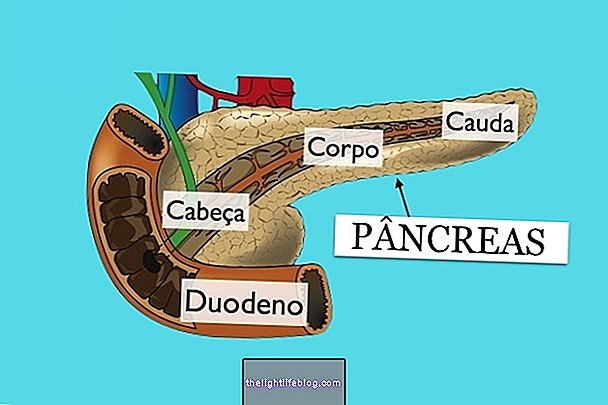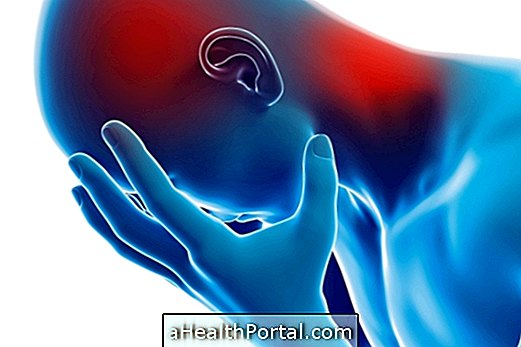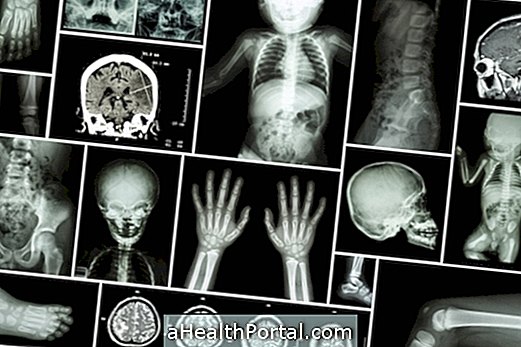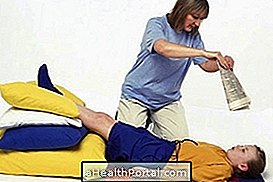Vision problems can arise soon after birth or develop throughout life due to trauma, injury, chronic diseases, or simply due to the natural aging of the body.
However, most vision problems can be corrected with the use of glasses, contact lenses or surgery to improve the patient's ability to see, especially when an ophthalmologist makes the diagnosis early in the problem and quickly initiates appropriate treatment .
1. Myopia

Myopia is characterized by the difficulty in seeing objects from afar, causing other symptoms to appear, such as headache or frequent eyes, and excessive tiredness after reading, for example. Check out other symptoms of this vision problem.
How to treat: Treatment for myopia is initiated with the use of glasses or contact lenses that help focus the observed image. However, another option is laser surgery that can be done after age 21 when the degree of myopia stops growing.
2. Hyperopia

Farsightedness consists of the difficulty in seeing objects closely and usually arises from birth, which can cause eye strain, headaches and difficulty concentrating, especially at school. Here's how to tell if you have farsightedness.
How to treat: Farsightedness can be treated with the use of glasses or contact lenses that help you see objects closely. However, the patient may also have surgery after the age of 21 to definitively modify or correct the cornea and avoid the constant use of glasses.
3. Astigmatism

Astigmatism is a vision problem that affects almost all people and that makes it possible to see the boundaries of blurred objects and can be easily identified when similar letters like H, M and N are mistaken for example. In addition, it is also common that with astigmatism, one can not correctly see straight lines. Learn about the causes of astigmatism.
How to treat: The treatment for astigmatism is done with the use of glasses or contact lenses that often must be adapted to two problems, since it is common that this problem also arises in patients with myopia or farsightedness.
4. Presbyopia

Presbyopia is the most common vision problem after age 40 due to the natural aging of the eye that causes difficulty in focusing on objects that are close by, causing the tendency to hold the newspaper or books further to read, for example. See other signs that may indicate presbyopia.
How to treat: Presbyopia can be corrected through the use of reading glasses that help correct the image when it is necessary to observe a close-up image or to focus on the text of a book.
5. Strabismus

Strabismus is the lack of alignment between the two eyes, which occurs mainly after the age of 5 due to the uncoordinated movement of the muscles of each eye, causing the appearance of double vision, headache and the deviation of the eyes, as shown the X image.
How to treat: The treatment of strabismus is usually initiated with the use of glasses or correction lenses; however, in some cases it may be necessary to use botulinum toxin or surgery to correct the strength of the muscles of each eye. Here are the treatment options for strabismus.
6. Glaucoma

Glaucoma is a vision problem caused by increased pressure inside the eye that causes severe eye pain, blurred vision, and redness. Symptoms can arise from one moment to the next or arise over time, depending on the type of glaucoma.
How to treat: The treatment depends on the type of glaucoma and therefore, each case should be directed by an ophthalmologist. However, in most cases the treatment is done with the use of eye drops and oral remedies to control the pressure inside the eye. Here's how to do the treatment and avoid complications.
7. Cataract

Cataracts are part of the natural aging of the eyes and are therefore more common in the elderly, causing signs and symptoms such as the appearance of a white film in the eye, decreased vision and increased sensitivity to light, for example. See other signs that may indicate cataracts.
How to treat: Cataracts are usually treated with surgery to remove the lens from the eye and replace it with an artificial lens.
In any problem of vision it is recommended that the patient consult the ophthalmologist regularly, at least once a year to evaluate the evolution of presbyopia and to adjust the type of treatment if necessary.
